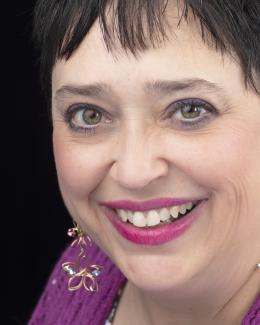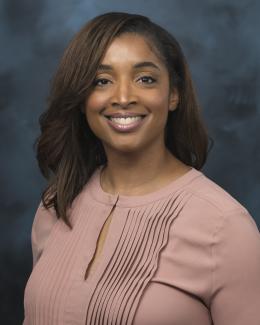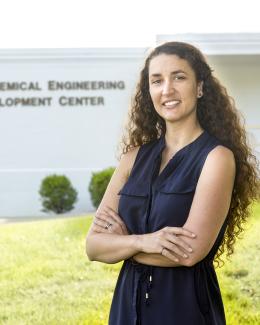
On a recent spring afternoon in East Tennessee, six Pellissippi State Community College students got a glimpse of what could be their futures.

The students, who toured ORNL’s isotope facilities, are the first to go through Pellissippi State’s Chemical Radiation Technology Pathway, a partnership between the college and Oak Ridge National Laboratory. Students who go through this pathway as part of Pellissippi State’s Associate of Applied Science in General Technology degree will be prepared to work at ORNL and other national labs immediately, whether or not they choose to complete a bachelor’s degree.
“Completing this pathway looks very good on your application,” said Clarice Phelps of ORNL’s Isotope Science and Engineering Directorate, or ISED, who spearheaded the initiative.
The pathway – which includes classes led by ORNL professionals such as Phelps, who teaches radiochemistry, and Environment, Safety, Health and Quality Directorate’s Jimmy Selph and Rich Franco, who teach Hazardous Waste Control – was created not only to give local students more opportunities, but also to help build the trained workforce ORNL will need as it continues to increase and improve production of isotopes as part of its national mission. Roughly 80% of Pellissippi State students stay in the region after college. The classes include training students can use immediately after graduating.

“Developing the Hazardous Waste Control course content was challenging but allowed us to focus on how students could create their own roadmap for success in highly regulated environments,” Selph said. “Guest speakers from ORNL shared their technical experience throughout the semester and offered keys for success to better prepare students for employment at ORNL, or wherever they choose to work.”
The first six students have diverse experiences and career goals. Three will be offered internships at ORNL this summer, Selph said, with structured training elements and mentors. All six could apply to work at ORNL after completing the pathway.
Jared Dowell is one who plans to do that. Dowell began pursuing a chemical engineering degree at the University of Tennessee just as the COVID-19 pandemic hit. Though he was still interested in chemical engineering, that program wasn’t a good fit, he said.
Dowell transferred to Pellissippi State to finish his degree. Then, he said, both of his grandmothers learned about the pathway through media coverage when it was finalized last spring.

“I was immediately sold,” Dowell said. “This is a huge opportunity, and it’s a great fit for me. I can get hands-on experience. I’d like to work at ORNL.”
Student Jon Rowland took a little more time to be convinced. Rowland obtained a bachelor’s degree in mathematics in 2021 and was considering returning to school for a master’s degree or certification. His father, Clark Rowland, who’s a quality engineer in the US ITER Project Support Office, told Jon about the pathway, but Jon was initially uncertain he wanted to do it. That changed when Jon called Pellissippi State and talked to the dean.
“The more I learn about the lab, the more I want to be there,” Rowland said. “There are too many cool things that happen here.”
The students had an opportunity to talk to lab leadership, including ORNL Director Stephen Streiffer.
“What you’re learning right now, the training you’re getting, is crucial, a specialized piece of education you can apply to so many things for the nation’s work,” Streiffer said. “It’s really great to get to come to work every day and you’re working on things that you see in the news. If you take this specialized piece of education, the payoff can be huge − not only because it makes you employable, but in terms of the impact you can have.”

That’s what attracted student Siosi Huerta to the pathway.
“My original plan was to major in nuclear engineering at UT, but this sounds a lot more like what I want to do,” Huerta said. “I took Clarice’s radiochemistry class and then analytical chemistry, and I instantly knew that I want to be in the fume hood, or working with something in the hot cell using the manipulators. I’m not opposed to doing nuclear engineering later if I don’t find fulfillment, but I’m also OK with sticking with this.”
Students who go through the pathway can go on to complete bachelor’s or higher degrees later, Phelps said. If they’re employed at the national lab, they can even take advantage of the educational assistance program after a year, which provides up to $10,000 a year toward continuing education.
“There’s a huge need in this country – and in this region − for radiation technicians,” said ORNL Chief Operations Officer Balendra Sutharshan, who pushed for the program when he was associate lab director for ISED. “You are in a very highly sought-out area.”

Pellissippi State’s Leslie Adamczyk, who serves as adviser for the pathway and teaches its analytical chemistry course, said she’s become something of a cheerleader for the pathway.
“Just the opportunities it offers for these students – they can come out with a two-year degree and be working at the national lab,” said Adamczyk, who herself was a post-doctoral researcher at ORNL. “I think my excitement brushes off on the students.”
That happened to Haley Massey, who was working toward a degree in anthropology when she took Adamczyk’s general chemistry II class “for fun” and found herself interested in the pathway.
“I like the idea of being able to work with my hands in a chemistry-related field,” said Massey, who said her interest in chemistry began in childhood and only grew when she attended high school at Knox County's L&N STEM Academy. She’ll finish the pathway in spring 2025, and “I’ll have the option for later education if I want it.”
Similarly, Taylor Lundquist is a sophomore majoring in biochemistry who plans to attend UT next semester.
“But I’m interested in learning about radiochemistry, especially medical isotopes,” she said. ORNL “does a lot of good and changes a lot of lives, and I’d love to be a part of that.”

Susan Hogle, director of ISED’s Radioisotope Science and Technology Division, encouraged the students to take advantage of the expertise available to them.
“Ask why,” Hogle said. “You’re here at a national lab where you can find an expert in almost anything. You have an assignment, and we want you to complete the work, of course, but we also want to inspire you to see the beauty of a national lab and the incredible things we can do here.”
Student Hayden Presley, who will graduate from the pathway in spring 2025, said that’s the primary reason he wants to work at the lab.
“I’ve always been fascinated by ORNL, living so close,” Presley said. “This program offers so many opportunities upon opportunities. Why would I pass that up?”
Phelps said the program’s initial success has other ORNL directorates looking to add classes at Pellissippi State, and other colleges considering partnering with ORNL for similar programs. She expects that, as word gets out, enrollment in the pathway will continue to grow.
“This is the beginning of something great that might be even better in the future,” Phelps said.
For information on the pathway, contact Leslie Adamczyk at laadamczyk@pstcc.edu or 865-539-7303.
UT-Battelle manages ORNL for DOE’s Office of Science. The single largest supporter of basic research in the physical sciences in the United States, the Office of Science is working to address some of the most pressing challenges of our time. For more information, please visit energy.gov/science.







